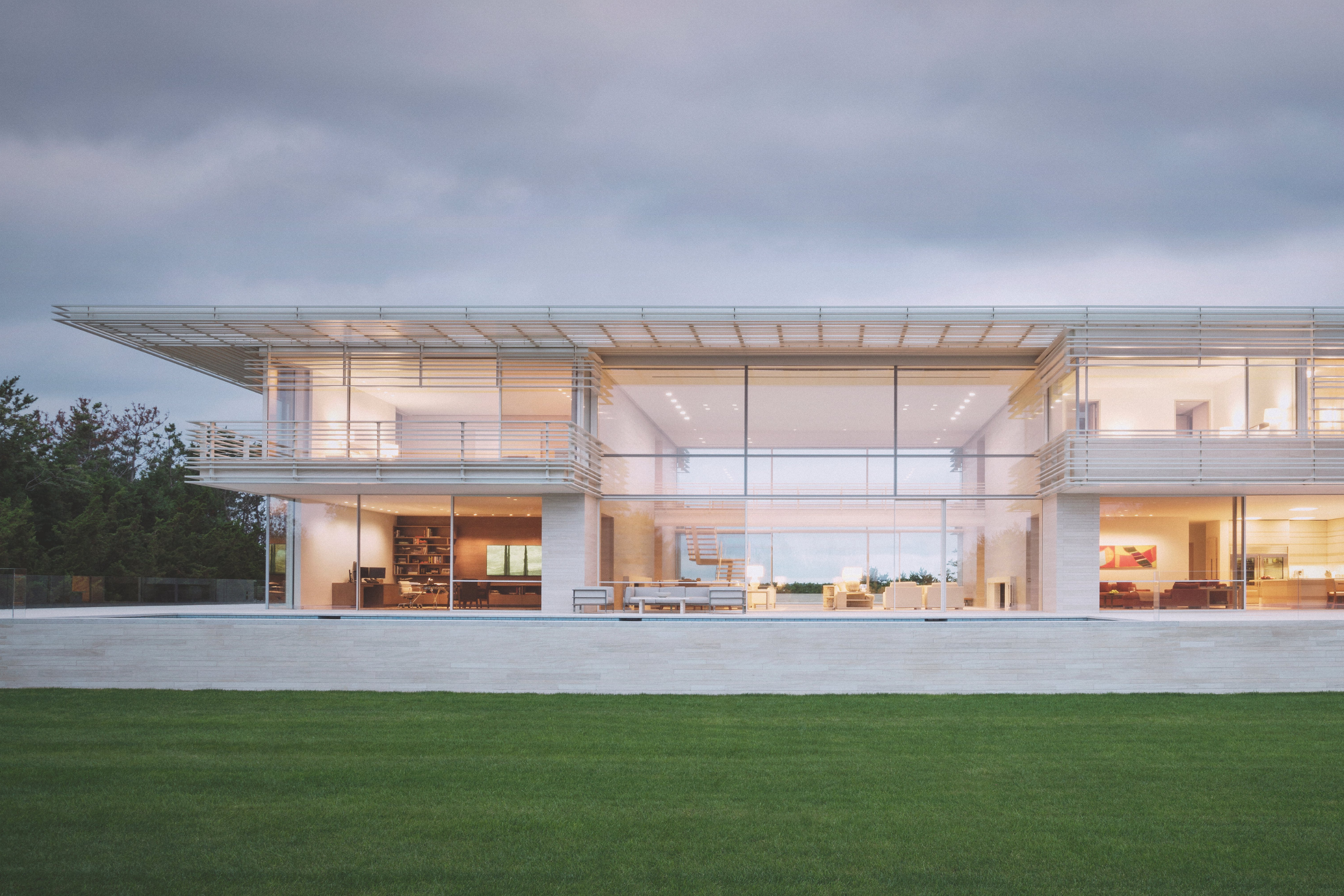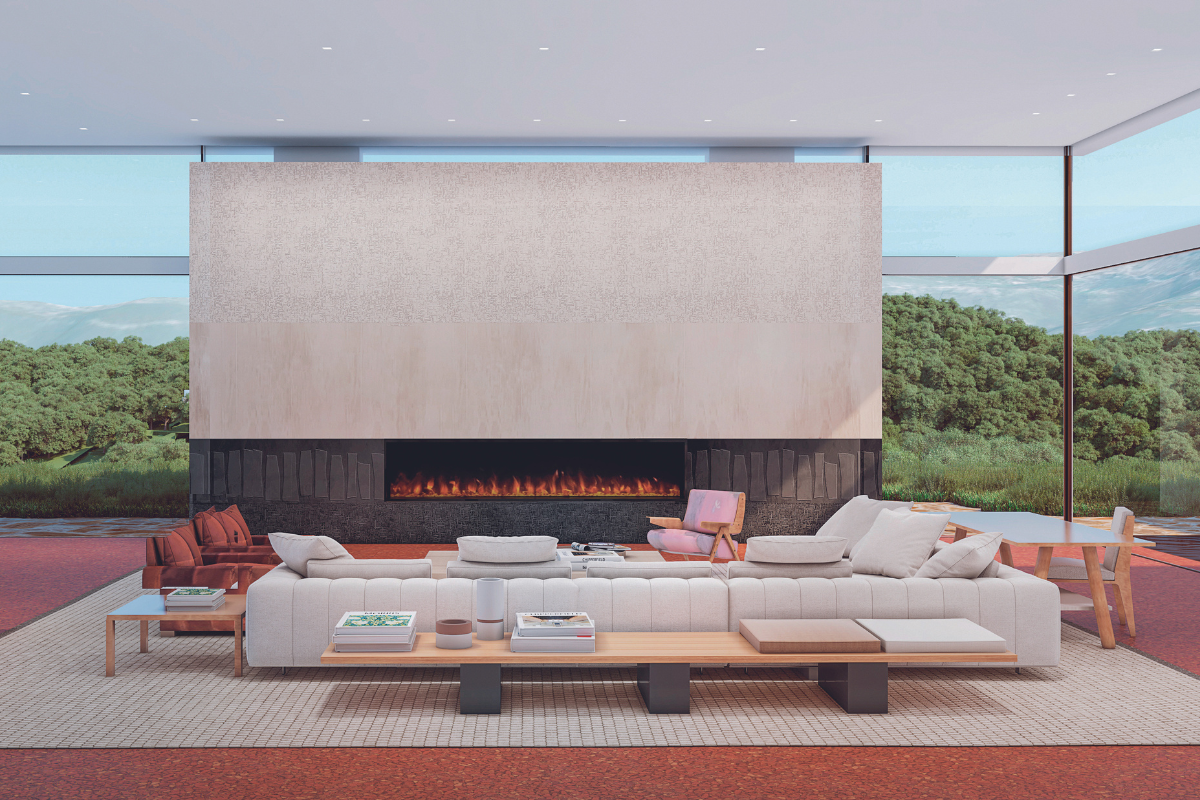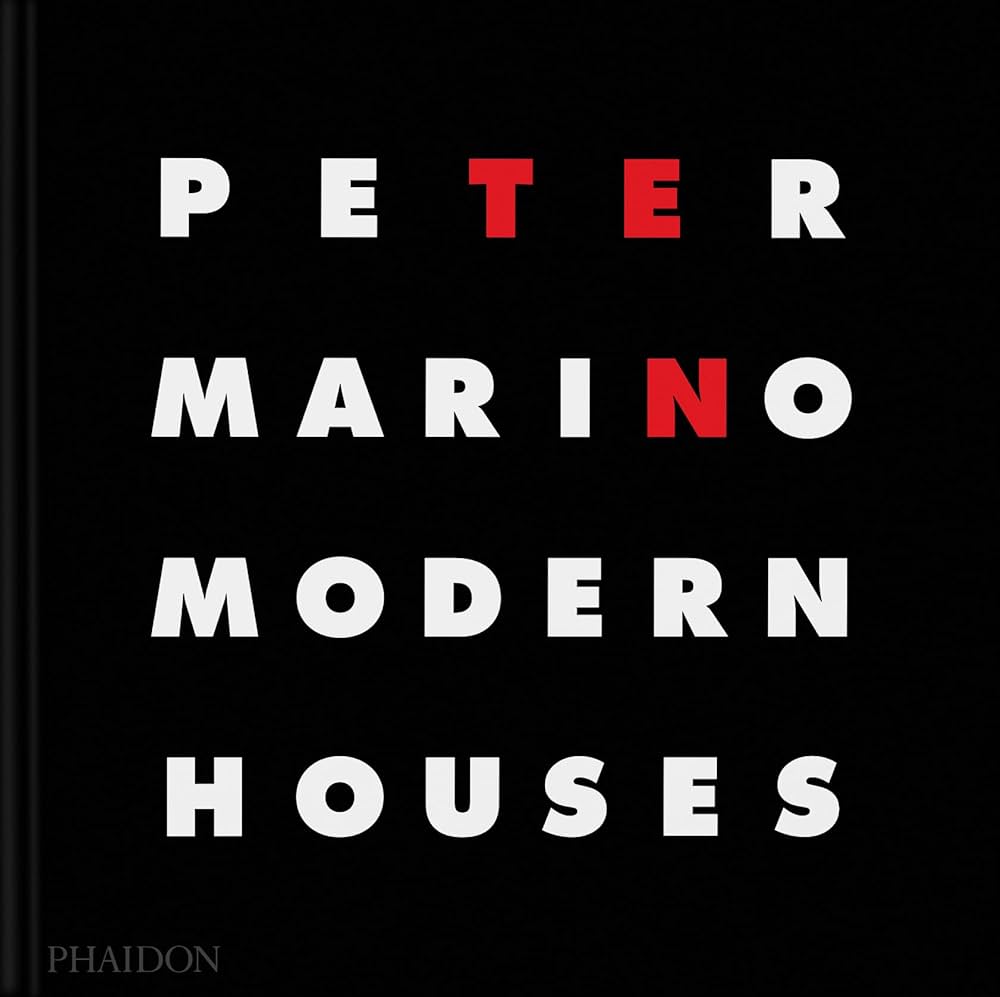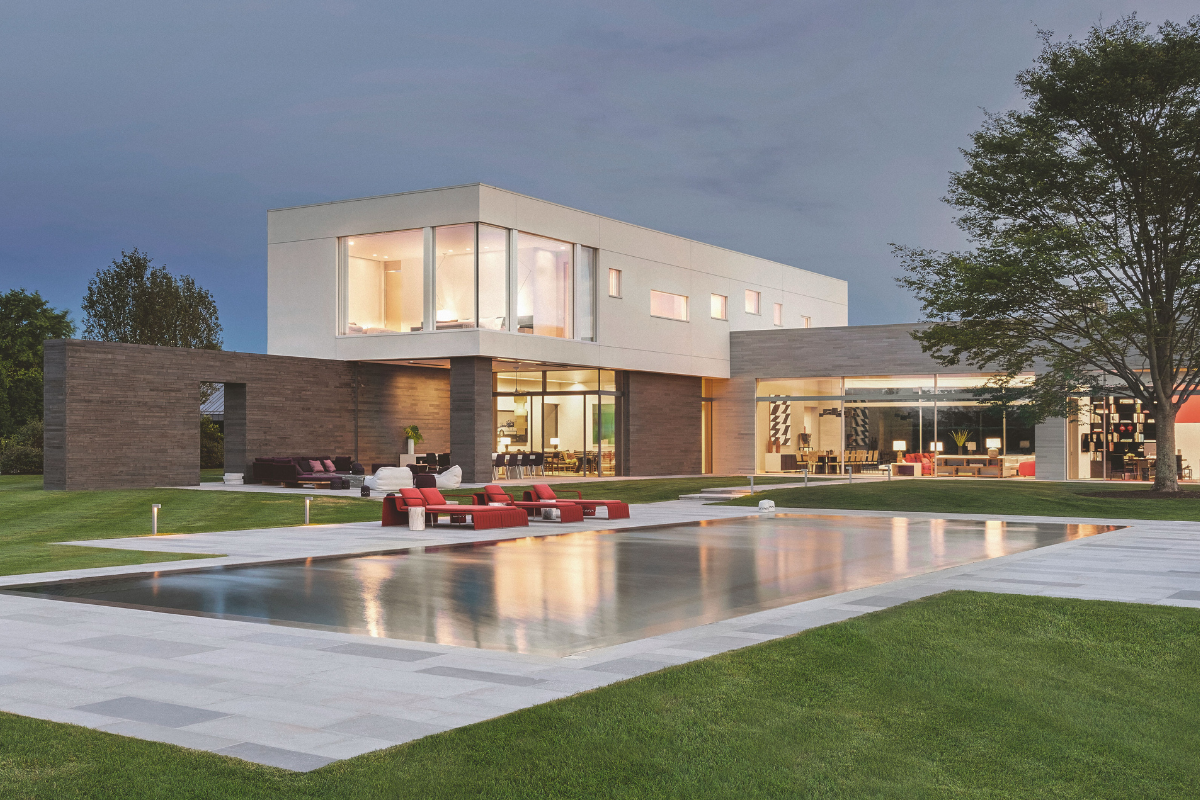Though perhaps most famous for his high-fashion retail projects, the legendary architect Peter Marino got his first big break when Andy Warhol commissioned him to renovate his 66th Street townhouse in 1978. “Andy had, like, three expressions. ‘Gee whiz,’ ‘great’ or ‘not at all’” Marino told the New York Times. “But he was quite clear about what he wanted. He was pretty tightfisted because he had started with nothing and made every single penny himself. I remember when the estimates came in, he asked Philip Johnson, ‘Philip, is this normal?’ And Philip said it was OK.”
Today, Marino, who has been called the “king of luxury” commands a bit more financial leeway with his residential clients. A self-described “interiors architect” Marino is known for investing the same care and exacting standards in the interiors he designs as the exteriors. And now, for the first time, 10 of his most luxurious private residences will be on display in a new book entitled, Ten Modern Houses (Phaidon). In this exclusive excerpt, design writer Pilar Viladas offers a sneak peek into the architect’s most dreamy homes.
Peter Marino may design modern buildings for a host of luxury retail clients — including Chanel, Louis Vuitton, Fendi and a colorful, art-filled renovation of Tiffany’s Fifth Avenue flagship — and collect contemporary art by such legends as Georg Baselitz, but he also collects 16th-century Italian bronzes and late 19th-century ceramics by Théodore Deck and Adrien Dalpayrat, and objects and sculpture by Claude and François-Xavier Lalanne. But is there a Peter Marino style? “No,” he says. “In general, what makes me tick is materials. I obsess over the stone, wood and glass.”
Marino himself primarily splits his time between a New York City apartment that he renovated to look as if it were built in 1800 and a warm, spacious house in Southampton that appears to have been designed in the early 20th century’s Arts and Crafts era — albeit the English version rather than the American — but was actually completed in 1995. Intimately connected to the materials chosen, Marino’s designs are equally driven by each house’s site. The architect’s own house in Aspen, for example, is full of sharp angles that echo the mountainous landscape on which the house perches. “My approach to residential design,” Marino says, “is very heavily influenced by the site, the functionality of the house and the way the clients want to live.” Marino also knows that these houses, which are used as weekend, summer, or winter houses, are what he calls “seasonal houses,” and that the clients are far more willing to entertain new ideas than they would be with their primary residences — which, the architect says, tend to be much more conservative.
Organized into 10 chapters — nine fully realized houses and a final chapter with a selection of houses in various stages of completion that are contestants for the 10th house — Marino sees this collection of residences as a curated portfolio of his architectural practice over the past decade and looking ahead to the future.
The book begins with a house in Southampton, New York, with views of both the Atlantic Ocean and Shinnecock Bay. There are, in fact, two Marino-designed houses located in the Long Island town, both of which the architect created in French limestone with glass side walls to offer views of the water on both sides. As a result, the houses are visually light and open, seeming almost to disappear into the landscape. The first house is a long, transparent box that sits on two slate-clad cores. The design emphasizes the flatness of the landscape, offering views of the bay and fields of reeds, with the west side of the house clad in stone to block the sun’s heat. Inside, the neutral color palette is accented by the colors and textures of the artworks and furniture.
The second house in Southampton, which is much larger, has baked aluminum railings and screens, or brise-soleils. A hallmark of French Modernist architecture, they produce what Marino calls “beautiful patterns of shadows” on the stone floors. The house’s interior is monochromatic, with the same French limestone floors and accents of color provided by its art and other carefully chosen elements, such as a blue-and-white-striped rug under the pool table.
In nearby Sagaponack, New York is a house that is not on a beach but rather is surrounded by nothing but fields on what used to be farmland and was designed as a group of more opaque interlocking forms. The lower part of the house, which contains the living room, dining room and kitchen, is a rectangular box clad in gray slate, while a white stucco box, which contains the bedrooms, is carved into the top of the slate box. A slate wall that extends out from under the white area acts as a windbreak for the outdoor seating area and pool. The living and dining rooms are located at right angles to one another, and in the family room, with its striped sofa, a light by Isamu Noguchi hangs above the table. A staircase with a cutout lighted railing leads from the bedrooms to the kitchen, and in one of the bedrooms, a light by Serge Mouille hangs from the ceiling above a view of lush trees. Marino built a garage on the property to look like a barn, to preserve what he calls “a fun reminiscence.”
Farther south, on Star Island, a man-made island that is part of Miami Beach, lies another limestone house. Unlike the two more transparent houses in Southampton, this one consists of a pair of two-story structures with limestone walls joined by a glass-walled bridge. On the inside, the limestone serves as what Marino calls “a beige canvas” for “innovative art and objects.” A large painting by Fernand Léger presides over the dining room, while a work by Robert Rauschenberg hangs above the bookcases in the library-sitting room. The main bathroom is a riot of green onyx, and a green-stained bamboo wall behind the bed in the main bedroom provides a fascinating texture. The house is a vivid illustration of Marino’s observation that owners of seasonal houses are much more adventurous than with their primary houses, where, he observes, “They tend to be too serious.”
Sometimes, however, a house’s site is unique enough that it calls for a “contextual solution,” according to Marino. The architect’s own house in Aspen is a prime example, where he used sharp angles to maximize the mountain views, given that the mountainous terrain limited the amount of land that he could build on. The rooms, and the outdoor decks, make the most of these views, and the understated but warm materials palette, inside and out, increases the feeling of spaciousness.
A house in Casa de Campo, in the Dominican Republic, is also set on what Marino calls “a very specific site,” with water on three sides — making it feel “more like an island than a house on the beach.” He calls the site “so beautiful and so gentle,” and the pavilions of shingled stone and Ipe wood, which are weather-resistant, are modern but also simultaneously vernacular and classical, and contain more than 17,000 square feet (1,580 m2) of space. In the entry, carved wood panels meant to look like bronze contrast with an icon of industrial design — Danish designer Poul Henningsen’s 1958 Artichoke light for Louis Poulsen. A painting by Bosco Sodi harmonizes with the living room’s white, black and gray palette and a large thatch-roofed outdoor pavilion with beige limestone floors contains sitting and dining areas.
One of the most dramatic sites is in Faqra, Lebanon, where a house is situated atop a surreal landscape of natural upright limestone columns native to the high elevation of more than 5,000 feet, which Marino calls a “geological wonderland.” The house, which is made of Lebanese sandstone, has angles that were inspired by those of the rocks, which Marino finds “dynamic,” and creates a residence that he calls “fortress-like.” Inside the house, color, texture and art give the rooms a distinctive warmth. In the entry, two sheep by François-Xavier Lalanne stand under a Pierre Soulages painting and near a sculpture by Tony Cragg. Another smaller Cragg sculpture sits on one of Marino’s own bronze boxes, under a much larger Soulages painting. In the red-goatskin-walled dining room, a large work by Andy Warhol depicts a quartet of women’s shoes. The contrast between exterior and interior makes the rooms all the more inviting.
Near Saint Tropez, in Ramatuelle, France, a rolling hillside is home to an expansive, glass-walled house that Marino designed to maximize the stunning views. Set on a series of steplike horizontal cliffs, the house looks like two angled wings and overlooks a pool with brightly colored, wavy lines that evoke flowing water on its floor. But step back, and you see that there is another, much larger level beneath. Inside, color and texture abound. Twentieth-century furniture and contemporary art by Urs Fischer, Richard Prince, Yoshitomo Nara and Damien Hirst — to name just a few artists — fill the rooms. But one of the biggest surprises is the lush, almost wild-looking landscape that surrounds the house. The hillside is planted with a profusion of trees, flowering plants and bushes that add an unexpected softness — and an otherworldly sense of pleasure — to the site.
In Grace Bay, Turks and Caicos, Marino designed an all-white house that is reminiscent of the Southampton houses; indeed, Marino calls it “very Hamptons” for the flatness of the site and proximity to the water. Although the house is a large, rectangular solid, the structure’s north side has lots of glass, while the south side is clad mainly in white stucco to deflect the heat of the Caribbean Sea. A flight of stairs separates the main house from the guest house, which is under the same roof, and the opening between the two buildings frames a view of the Atlantic Ocean. Inside, a large painting by Y.Z. Kami hangs above one of Marino’s bronze boxes, this one with a silvered finish. A custom screen by Mark Hagen separates the living and dining rooms, and a second-floor guest room overlooks the pool and the ocean, creating a long vista of deep blue.
While the nine completed houses featured in this book exemplify Marino’s mastery of both site and materials, the five residences in the final chapter — all in various stages of progress — are contenders for the 10th house, showcasing the architect’s next era of design. The first is a marble-clad house in Summerlin, Nevada, with pointed roof canopies that recall Marino’s Aspen house. Another house, also in Aspen, is the client’s primary residence and has full-roof versions of the Summerlin structures that are just as pointed. In Malibu, California, Marino revisits his use of limestone for a family home situated on a rocky bluff with majestic ocean vistas. Views of the sea are also the focal point for a house on the French Caribbean island of St. Barts, where the steep site and Mediterranean climate inspired a structure divided into a number of pitched-roof pavilions. The fifth project is a sprawling compound on the Greek island of Skorpios that exudes an atmosphere of relaxation and classic Modernism.
Throughout these five houses, Marino has emphasized that the “indoor-outdoor” aesthetic and design are “essential.” And even though they are not all seasonal residences, they do embody Marino’s enduring philosophy that such houses are “more free, more easy, more open and free-flowing,” designed with “an aesthetic that is hugely less complicated” than what the residents encounter in their everyday lives.
Excerpted from Peter Marino: Ten Modern Houses © 2024 by Peter Marino, with an introduction by Pilar Viladas and additional texts by Sam Lubell. Reproduced by permission of Phaidon. All rights reserved.










